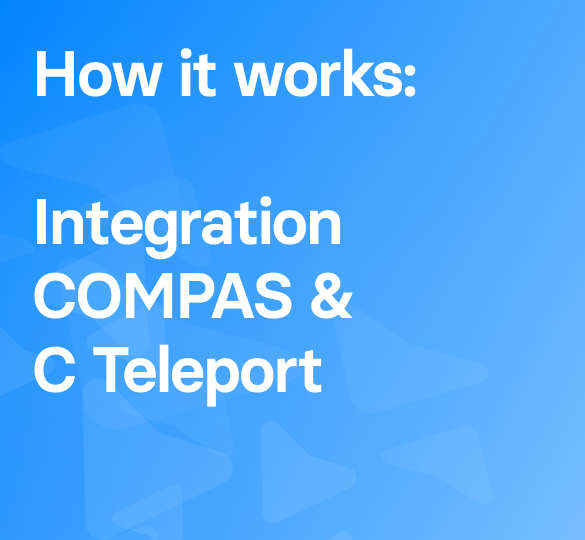The travel industry is constantly evolving, and one of the most significant shifts has been the introduction of NDC (New Distribution Capability). For frequent travellers, corporate travel managers, and travel agencies, understanding NDC in travel is essential to unlocking greater transparency, personalisation, and efficiency.
Table of Contents
- What is NDC?
- Why was NDC created?
- How does NDC work?
- Airlines working with NDC
- Benefits of NDC in travel
- Challenges of NDC
- How can companies access NDC fares?
What is NDC?
The NDC meaning, as explained by its developer, the International Air Transport Association (IATA), is a data interface for the airline industry to distribute and sell flight content more dynamically.
In simple terms, NDC lets airlines sell their tickets and services directly to consumers and travel agencies without relying entirely on traditional Global Distribution Systems (GDS), which often limit personalisation and product flexibility.
Why was NDC created?
For decades, airline distribution relied heavily on GDS, which uses the legacy EDIFACT (Electronic Data Interchange for Administration, Commerce, and Transport), a messaging standard developed in the 1980s.
IATA introduced NDC to modernise airline distribution by overcoming the limitations of legacy systems. Since traditional standards couldn’t easily support dynamic pricing, rich product descriptions, or personalised bundles, NDC was created to bring airline sales closer to the flexibility of modern e-commerce.
How does NDC work?
Instead of traditional booking systems, NDC uses an XML-based communication standard. This allows airlines to:
- Distribute their content directly to travel agencies and travel management platforms.
- Showcase dynamic pricing and bundled offers.
- Provide richer product descriptions, similar to how hotels and e-commerce platforms market their products.
Airlines working with NDC
Many leading airlines are already adopting NDC, including Lufthansa, British Airways, American Airlines, Emirates, Air France-KLM, and more. Their participation shows how widely NDC is being embraced across the industry and how quickly it is becoming a new standard for airline distribution.
However, this does not always mean you can simply book these fares directly on the airline’s own website. NDC content is often made available through select travel agencies and travel management platforms that are connected to the airline’s NDC channels.
Want to explore these fares with ease? Book a demo with C Teleport and get a one-month free trial to access NDC fares in one place and automate your travel management.
Benefits of NDC in travel
When you buy a ticket through the airline’s website, you know you can get offers directly from the airline with your frequent flyer number. However, when you book with a travel agent, you don’t get personalised recommendations based on your preferences because travel agents don’t have this information.
NDC allows airlines to directly replicate the content from their website to the travel agent’s channel, benefiting themselves, the travel agent, and you, the customer.
Benefits of NDC for travellers:
- Greater transparency on pricing and options.
- Access to special fares and offers, even when buying from a third party.
- Easier purchase of extras during booking.
Benefits of NDC for airlines:
- Increased revenue opportunities from upselling.
- Direct connection with travellers and agencies.
- Better brand differentiation.
Benefits of NDC for travel agents and corporates:
- More comprehensive content from airlines.
- Ability to deliver tailored options for clients.
Challenges of NDC
Though NDC has been around for a few years, it’s still evolving and far from perfect.
There are a couple of key downsides to consider:
1. Lack of true standardisation
NDC is an XML-based system, meaning the code is written in XML (Extensible Markup Language). While XML is supposed to be standardised, its implementation depends on each airline’s IT provider.
In practice, this means there isn’t a single, uniform “standard” to work with. If every airline develops its own variation, it creates countless connection requirements, making it extremely difficult for online travel agencies and platforms to integrate the technology at scale.
2. Resistance from the industry
Most travel agents and aggregators remain comfortable with the traditional GDS model they’ve used for decades. Transitioning to NDC often comes with additional costs and may require significant changes to existing business models.
For now, this means NDC is treated as a premium add-on for many travel platforms rather than a core necessity.
The good news is that working with an NDC-enabled travel platform helps businesses overcome these hurdles, making it easier to access richer airline content without dealing with the complexity of fragmented standards.
How can companies access NDC fares?
Companies can access NDC fares by working with travel platforms that are already NDC-enabled. Platforms like C Teleport simplify the complexity of fragmented standards and make richer airline content available without the integration hurdles that come with dealing directly with each airline.
Want to experience these benefits firsthand? Book a demo today and get a one-month free trial so your team can get direct access to NDC fares and explore a smarter, more flexible way to manage travel.


